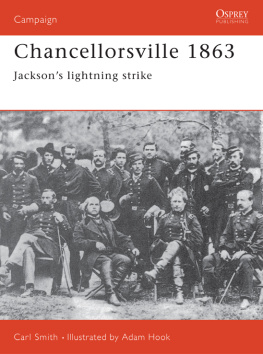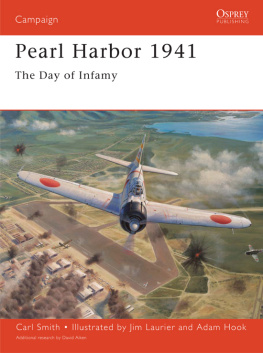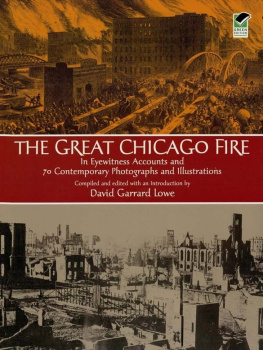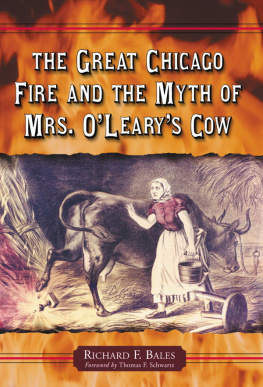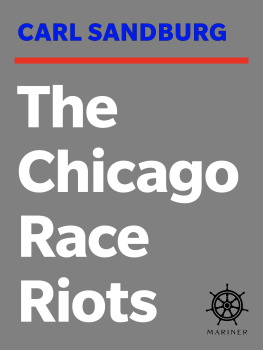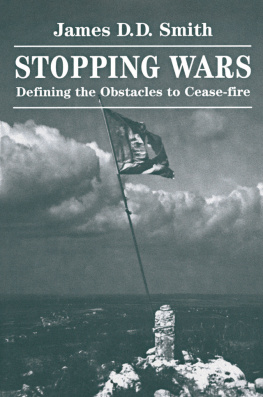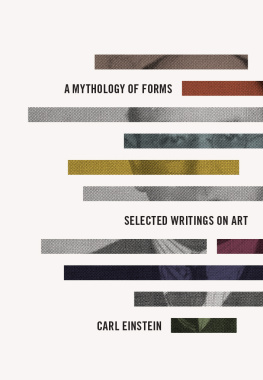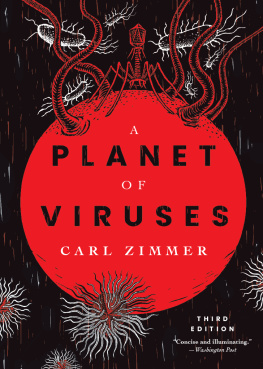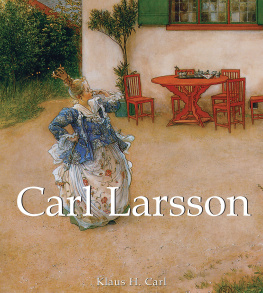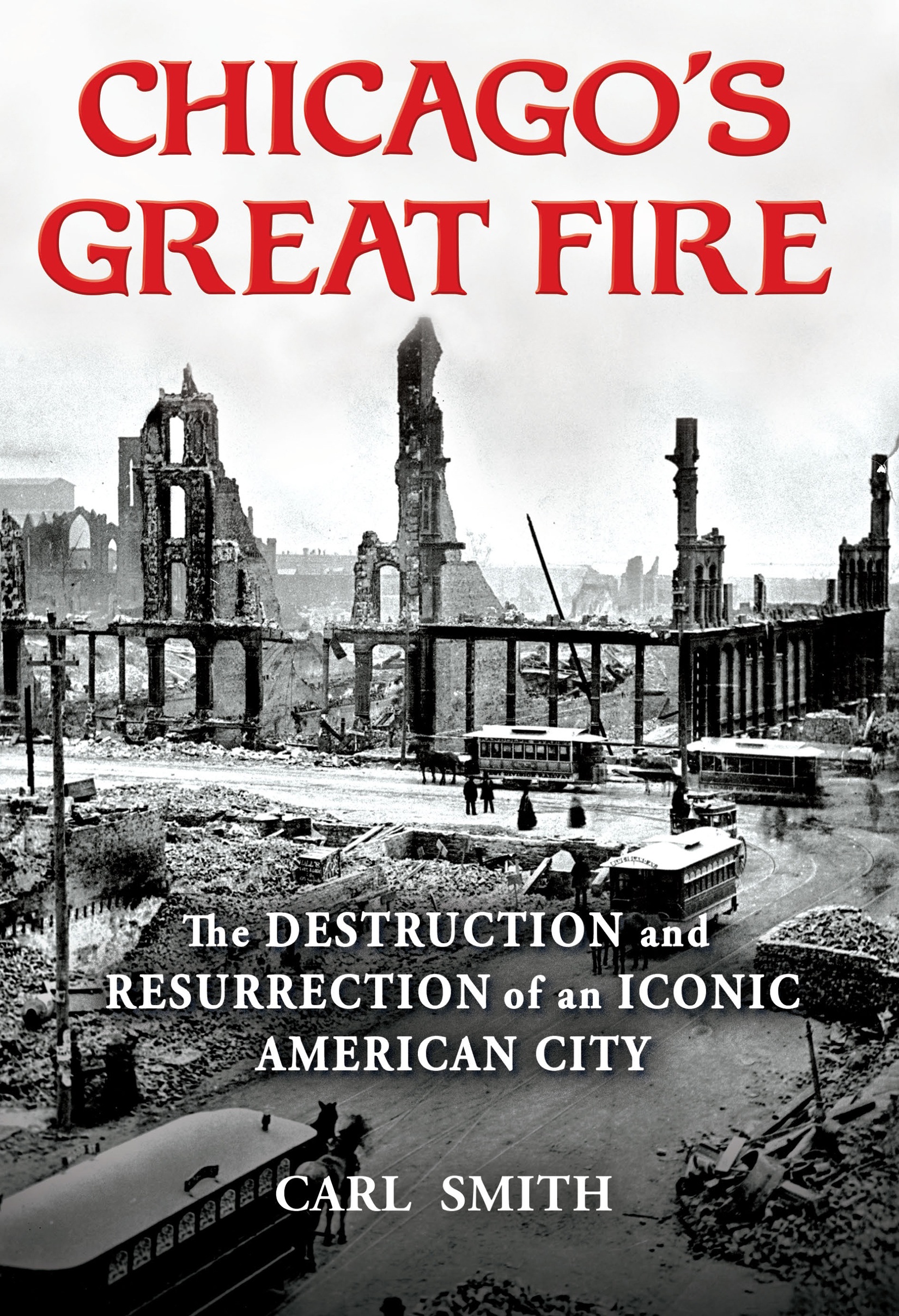Contents
Guide
Pagebreaks of the print version
A LSO BY C ARL S MITH
City Water, City Life: Water and the Infrastructure of Ideas in Urbanizing Philadelphia, Boston, and Chicago
The Plan of Chicago: Daniel Burnham and the Remaking of the American City
Urban Disorder and the Shape of Belief: The Great Chicago Fire, the Haymarket Bomb, and the Model Town of Pullman
Chicago and the American Literary Imagination, 18801920
CHICAGO S GREAT FIRE
The Destruction and Resurrection of an Iconic American City
Carl Smith

Atlantic Monthly Press
New York
Copyright 2020 by Carl Smith
Jacket photograph: State and Madison Streets just after the fire, October 1871, courtesy of Chicago Historical Society
Maps Dennis McClendon, Chicago Cartographics
All rights reserved. No part of this book may be reproduced in any form or by any electronic or mechanical means, including information storage and retrieval systems, without permission in writing from the publisher, except by a reviewer, who may quote brief passages in a review. Scanning, uploading, and electronic distribution of this book or the facilitation of such without the permission of the publisher is prohibited. Please purchase only authorized electronic editions, and do not participate in or encourage electronic piracy of copyrighted materials. Your support of the authors rights is appreciated. Any member of educational institutions wishing to photocopy part or all of the work for classroom use, or anthology, should send inquiries to Grove Atlantic, 154 West 14th Street, New York, NY 10011 or .
FIRST EDITION
Published simultaneously in Canada
Printed in Canada
First Grove Atlantic hardcover edition: October 2020
Library of Congress Cataloging-in-Publication data is available for this title.
ISBN 978-0-8021-4810-0
eISBN 978-0-8021-4811-7
Atlantic Monthly Press
an imprint of Grove Atlantic
154 West 14th Street
New York, NY 10011
Distributed by Publishers Group West
groveatlantic.com
To my family
CONTENTS
It takes all sorts of people to make a great fire.
Horace White
PREFACE
The spectacular conflagration that struck Chicago on the evening of Sunday, October 8, 1871, is the most well-known urban fire in the history of the United States and one of the nations most fabled disasters. The flames that started in the West Side barn where Catherine OLeary tended her milk cows devastated close to three square miles of cityscape, including the heart of the citys kinetic downtown, and left around ninety thousand people homeless. The overmatched fire department was unable to stop it, especially once the roof of the citys new waterworks Pumping Station collapsed onto the machinery below. The relentless fire did not cease until it burned itself out in the early morning of Tuesday, October 10, some thirty hours after it began.
The Great Chicago Fire has had a powerful and enduring imaginative resonance. It immediately drew enormous attention, including a spontaneous outpouring of millions of dollars in charitable contributions from around the nation and the globe. This was because Chicago, which barely existed only forty years earlier, had already assumed a commanding position in the urbanizing and industrializing worlds widening transportation and communications network. In its insatiable ferocity and preternatural vigor, the fire was a fitting counterpart to this epic new city. Chicago had burst into being with an explosive force that transformed it in mere decades from a distant dot on the periphery of the American frontier to one of the countrys largest and most important cities. It was emblematic of the urban future and the disruptive arrival of modernity itself.
Almost immediately, many Chicagoans paradoxically came to see the heroic destruction of their city as an unexpectedly positive event, a stage in its irresistible upward development rather than a dispiriting setback. They viewed the legendary conflagration as merely the prelude to Chicagos triumphant recovery out of the ashes, a mythic second creation. The most important lesson of the citys apparent destruction, they maintained, was that Chicago was indestructible, since it emerged from this literal trial by fire bigger and stronger than ever.


